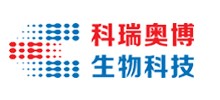产品中心
当前位置:首页>产品中心Anti-FRAT1/PE-Cy7
货号: bs-12434R-PE-Cy7 基本售价: 2980.0 元 规格: 100ul
产品信息
- 产品编号
- bs-12434R-PE-Cy7
- 英文名称
- Anti-FRAT1/PE-Cy7
- 中文名称
- PE-Cy7标记的原癌基因FRAT1抗体
- 别 名
- FRAT 1; frequently rearranged in advanced T cell lymphomas; Frequently rearranged in advanced T-cell lymphomas; GSK 3 binding protein FRAT1; proto oncogene FRAT1; FRAT1_HUMAN.
- 规格价格
- 100ul/2980元购买 大包装/询价
- 说 明 书
- 100ul
- 研究领域
- 肿瘤 细胞生物 发育生物学 信号转导 干细胞 淋巴细胞 t-淋巴细胞 表观遗传学
- 抗体来源
- Rabbit
- 克隆类型
- Polyclonal
- 交叉反应
- Human, Mouse, Rat, Dog, Cow,
- 产品应用
- ICC=1:50-200 IF=1:50-200
not yet tested in other applications.
optimal dilutions/concentrations should be determined by the end user.
- 分 子 量
- 29kDa
- 性 状
- Lyophilized or Liquid
- 浓 度
- 1mg/ml
- 免 疫 原
- KLH conjugated synthetic peptide derived from human FRAT1
- 亚 型
- IgG
- 纯化方法
- affinity purified by Protein A
- 储 存 液
- 0.01M TBS(pH7.4) with 1% BSA, 0.03% Proclin300 and 50% Glycerol.
- 保存条件
- Store at -20 癈 for one year. Avoid repeated freeze/thaw cycles. The lyophilized antibody is stable at room temperature for at least one month and for greater than a year when kept at -20癈. When reconstituted in sterile pH 7.4 0.01M PBS or diluent of antibody the antibody is stable for at least two weeks at 2-4 癈.
- 产品介绍
- background:
FRAT1 and FRAT2 were originally characterized as proteins frequently rearranged in advanced T cell lymphoma, and they have since been identified as proto-oncogenes involved in tumorigenesis. These proteins share significant homology with the Xenopus glycogen synthase kinase-3 (xGSK-3) binding protein, which is designated GBP and is essential for the formation of the dorsal-ventral axis during embryonic development. Establishment of these embryonic axes is mediated by the Wnt intracellular signaling pathway. Wnt signaling is regulated in part by the activity of GSK-3, which phosphorylates and thereby facilitates the degradation of ?catenin. GBP binds to GSK-3 and inhibits this phosphorylation, resulting in the accumulation of ?catenin and the subsequent transcription of Wnt target genes. Like GBP, FRAT2 has been shown to bind xGSK-3, suggesting that FRAT1 and FRAT2 may be GSK-3 regulatory proteins.
Function:
The protein encoded by the FRAT1 gene belongs to the GSK-3-binding protein family. The protein inhibits GSK-3-mediated phosphorylation of beta-catenin and also positively regulates the Wnt signaling pathway. It may play a role in tumor progression and in lymphomagenesis.
Subunit:
Binds DVL1. Binds GSK-3 and prevent GSK-3-dependent phosphorylation.
Subcellular Location:
Cytoplasmic.
Post-translational modifications:
Phosphorylated (By similarity).
Similarity:
Belongs to the GSK-3-binding protein family.
Database links:
UniProtKB/Swiss-Prot: Q92837.3
Important Note:
This product as supplied is intended for research use only, not for use in human, therapeutic or diagnostic applications.

